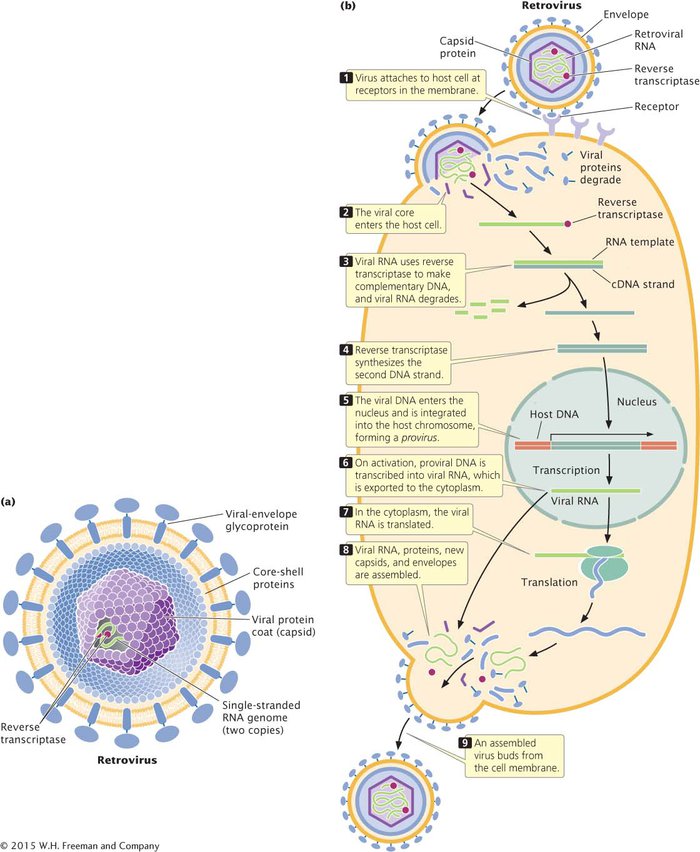RNA Viruses
Thus far, we have primarily considered viruses that infect bacteria. Viruses also infect plants and animals, and some are important pathogens in these organisms. What we have learned about bacteriophages has important implications for viruses that infect more complex organisms.
Viral genomes may be encoded in either DNA or RNA. RNA is the genetic material of some medically important human viruses, including those that cause colds, influenza, polio, and AIDS. Almost all viruses that infect plants have RNA genomes. The medical and economic importance of RNA viruses has encouraged their study.
RNA viruses capable of integrating into the genomes of their hosts, much as temperate phages insert themselves into bacterial chromosomes, are called retroviruses (Figure 7.26a). Because the retroviral genome is RNA, whereas that of the host is DNA, a retrovirus must produce reverse transcriptase, an enzyme that synthesizes complementary DNA (cDNA) from either an RNA or a DNA template. A retrovirus uses reverse transcriptase to copy its RNA genome into a single-

When conditions are appropriate, the provirus undergoes transcription to produce numerous copies of the original RNA genome. This RNA encodes viral proteins and serves as genomic RNA for new viral particles. As these new viruses escape the cell, they collect patches of the cell membrane to use as their envelopes.
All known retroviral genomes have three genes in common: gag, pol, and env, each encoding a precursor protein that is cleaved into two or more functional proteins. The gag gene encodes proteins that make up the viral protein coat. The pol gene encodes reverse transcriptase and an enzyme, called integrase, that inserts the viral DNA into the host chromosome. The env gene encodes the glycoproteins that appear on surface of the virus.
Some retroviruses contain oncogenes (see Chapter 16) that may stimulate cell division and cause the formation of tumors. The first retrovirus to be isolated, the Rous sarcoma virus, was originally recognized by its ability to produce connective-